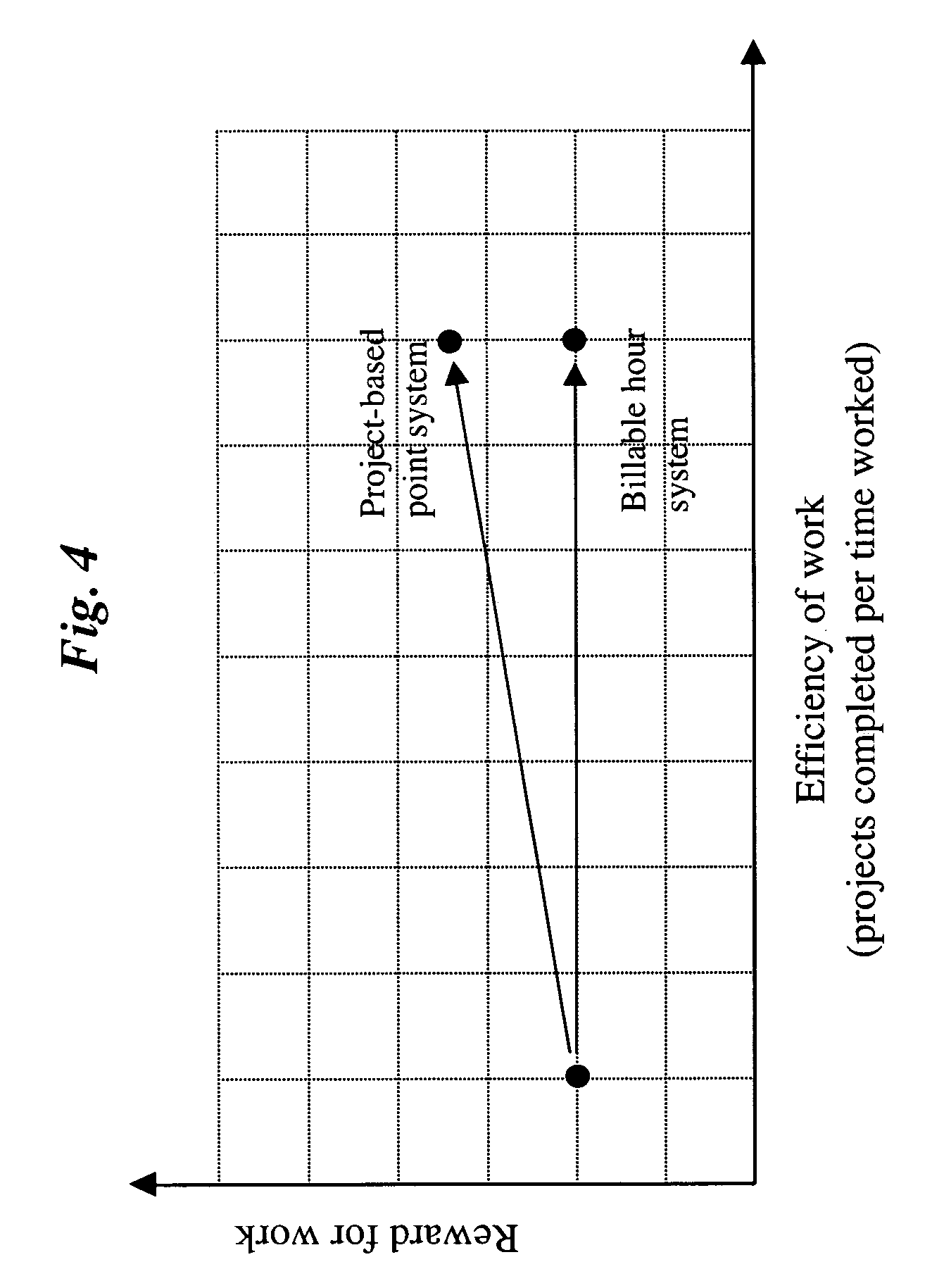Despite its widespread use, the billable hour system has many problems with both its internal and external aspects.
Because employees are evaluated based on the quantity of hours spent, the system discourages employees from performing work more efficiently.
For example, an inexperienced and inefficient employee who spends a long time completing a project is paid more than an experienced and efficient employee who completes the work quickly, thereby discouraging employees from improving their work efficiency.
Lack of efficiency then leads to the need for management to monitor time reported by employees to determine whether all the time logged by the employees is actually billable.
Moreover, because quantity of service is internally valued over
quality of service, the firm may become more vulnerable to professional liability and may lose valuable clients.
The billable hour system also consumes employee time
logging and reporting every minor task performed and its associated
client case.
In addition to consuming time, this reporting distracts the employee from concentrating on the actual service being performed.
Moreover, under the billable hour system, management also has the burden of tracking employee vacation time.
Existing computerized systems to assist in the management of projects and employees are generally limited to the billable hour system, and therefore embody and perpetuate these problems.
The billable hour system as a method of billing clients external to the firm also suffers from various problems.
Because of these conflicting interests, the billable hour system consumes valuable management time reviewing invoices, determining whether the time is justified, and correcting the invoices.
Another problem is that billing clients by the hour generates complex invoices that lack simplicity and transparency, resulting in frequent requests from clients to discuss or dispute specific charges or number of hours.
These demands are very burdensome to the firms, especially when they involve various distinct and changing invoicing requirements imposed by different clients.
Even with a uniform set of industry-wide task codes to categorize standardized tasks or deliverables, the invoices are still complex and often result in discussion and dispute of various small line-item details.
Invoices containing a large number of detailed items also has the
disadvantage of giving the client a sense of being ‘
nickel-and-dimed’ for many minor tasks performed within the firm, distracting them from the primary
deliverable being provided.
Existing computerized systems to assist in the invoicing of projects to clients are generally designed for the billable hour system, and therefore perpetuate these problems.
The fixed fee system, however, solves only the external problems caused by the billable hour system.
Thus, the significant internal problems created by the billable hour system are not solved by merely switching to a fixed fee client
billing system.
These systems, however, merely introduce countermeasures to the billable hour system.
They do not dispense with or replace the billable hour system for employees.
Consequently, many of the fundamental internal problems created by the billable hour system remain.
For example, the system still values quantity over quality as a measure of performance, still discourages employees to perform work efficiently, still requires management to review time reported by employees to ensure that it is reasonable, and still consumes valuable employee time
logging time.
Moreover, because computerized systems are designed to use the billable hour to manage projects, employees, and client charges, attempts to depart from the billable hour system are often difficult or impossible to implement using such systems.
In any case, the computer-implementation of the system suffers from the inherent limitations of the assumptions that underlie the organization and design of the system.
Thus, the usefulness of existing computerized implementations of employee management systems is limited by the problems of the billable hour system that is built into them.
 Login to View More
Login to View More  Login to View More
Login to View More 


